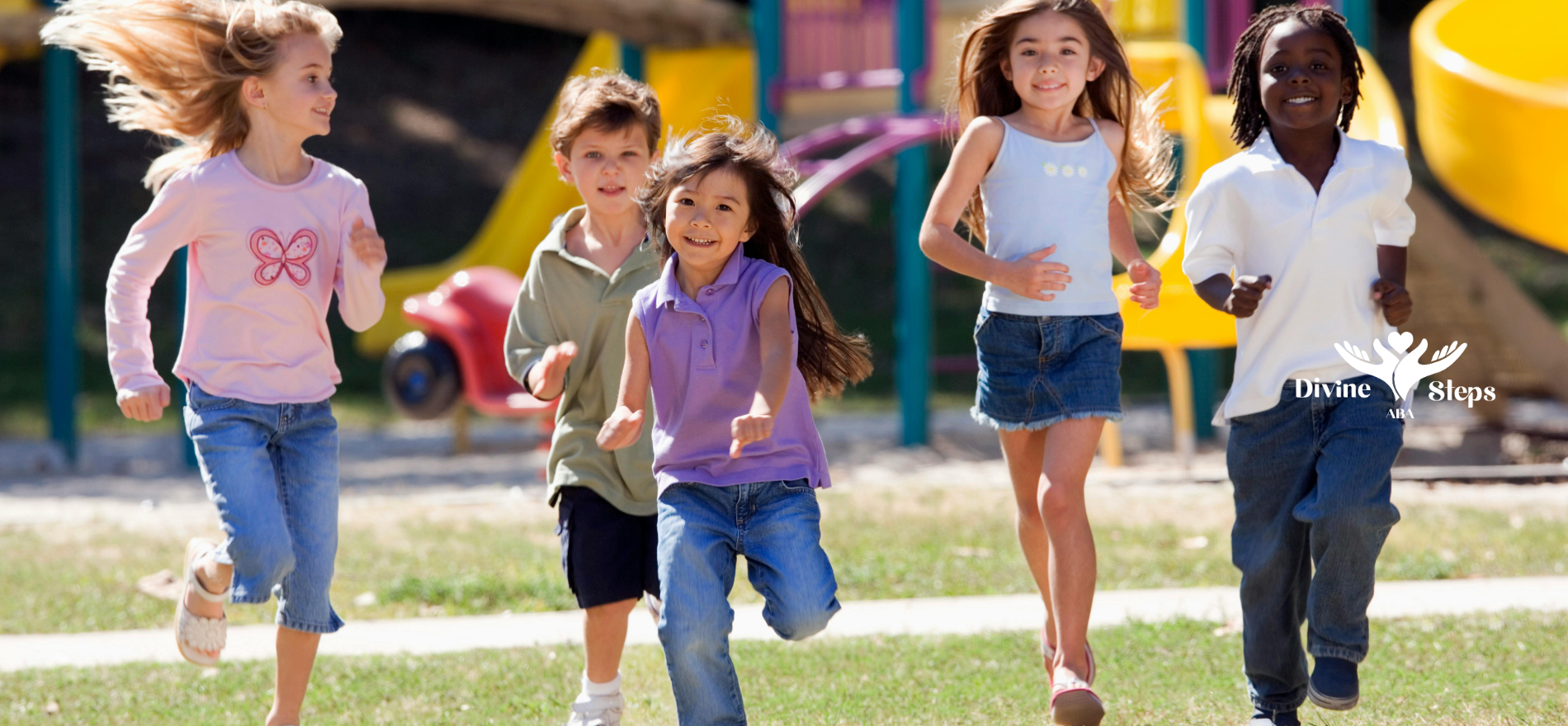Website by CWS
What Do Kids Do in ABA Therapy? A Look at Daily Growth-Driven Tasks
Many parents assume ABA therapy looks like sitting at a desk doing drills all day. As someone who delivers ABA therapy in Maryland daily, I can tell you—it’s far more dynamic and fun than most imagine. It’s structured, yes, but full of play, creativity, and learning that adapts to each child’s world.
I remember working with Zoe, a 4-year-old who hated transitions. We built an activity using her love for animals. With visual schedules and pretend zoo games, she began understanding routines—and smiling through them.
ABA works best when it’s child-led, and that’s what makes the difference.
Core Activities in ABA Therapy
ABA therapy sessions use a mix of planned and play-based activities to teach life skills. In these therapy sessions, your child might do role-playing games to help build social skills. The therapist also uses things like visual aids to help your child with functional communication.
All of these activities in ABA therapy are planned to fit what your child needs most. This helps make learning work better for them.
In ABA therapy, your child may also take part in special techniques like discrete trial training and natural environment training.
These are used to help your child learn skills like self-help tasks and other things needed each day. With this support, your child can start to be more independent and feel confident as they grow.
Role-Playing Games to Enhance Social Skills
Role-playing games are a fun part of ABA therapy. They help kids on the autism spectrum learn important social skills. With these games, your child can practice how to take turns, share, and understand how people feel in real life.
In ABA sessions, therapists set up role-playing games that are fun and led by the child. For example, your child may have a pretend tea party. This lets them use their words and work with others in new ways. These games also help your child show what they feel and learn good ways to answer and care about others.
Role-playing games do more than just build social skills. They also give your child a safe place to learn about their own feelings. By playing these games, your child grows more sure of themself. This helps them take part in different social groups later on.
Use of Visual Aids for Communication Improvement
Visual aids are important tools in ABA therapy that help improve communication skills. These tools, like picture cards, charts, and digital signs, let autistic children understand words better and say what they need. For example, a therapist may show images of food to help your child name what snacks they like or ask for meals.
When ABA therapists use visual aids that match your child's interests, they make complicated tasks much easier. This way, children have more fun learning. The tools can lower frustration and make it clear what is expected of them. They help close the gap in language, so your child can share what they want or need better.
Visual aids do more than help your child say things. They also boost receptive language, which means your child can follow directions by themselves. This helps your child feel good about doing simple tasks alone. These aids are a big part of ABA therapy, which aims to build practical and useful life skills for your child.
What ABA Therapy *Is* and *Is Not*
🚫 What It's NOT
- ❌ Drill-only sessions
- ❌ Rigid, one-size-fits-all plans
- ❌ Ignoring child interests
✅ What It IS
- ✔️ Play-based & interactive
- ✔️ Personalized activities
- ✔️ Responsive to child’s pace
Techniques Employed in ABA Sessions
ABA sessions use proven ways that fit your child’s needs and help them grow. Discrete trial training teaches skills in a set way, while natural environment training helps your child learn in day-to-day places and moments.
Therapists also use pivotal response treatment. They use what your child enjoys to help him learn better. They may work with your child on a set task or they may bring in goals through play.
ABA therapists always change how they teach to match what your child is doing. This way, your child gets a mix of learning and builds many skills in the aba sessions.
Discrete Trial Training (DTT) Explained
Discrete Trial Training (DTT) is a simple way used in applied behavior analysis. It takes big skills and breaks them into small tasks. This helps your child learn better.
In DTT, your child learns step by step. Each step has a cue, a response, and a consequence. The used positive reinforcement to help your child learn the desired behaviors. DTT is good for building skills like communication, social skills, and daily living skills.
This method fits well into any ABA therapy plan made for autistic children. It is an important part of behavior analysis.
Incorporating Natural Environment Training (NET)
Natural Environment Training (NET) uses normal, daily moments to help children in ABA therapy learn better. In this way, lessons happen while kids play or help with things like making food. This means that skills, like how to talk with others or get along, are taught during real-life situations.
Children get to use their favorite toys or spend time with family members while learning positive behaviors. By doing this, the kids can understand and use these skills in many different places. This helps what they learn to be more useful in daily life.
The teaching feels more natural and matches what each child likes. It can help them be more interested and take part more fully during the therapy. Overall, natural environment training makes ABA therapy more fun and helpful for the child.
Behavioral Reinforcement Strategies
ABA therapy uses behavior analysis to help your child show more positive behaviors. It works by using positive reinforcement. This means your child will get a reward for doing the right thing.
For example, if your child asks for something by speaking up, you can give them a favorite toy. This makes it more likely they will ask by speaking up next time too.
Another big part of aba therapy is being steady with your responses. When you always use the same answers and rewards, your child will know what to expect. This makes it easier for them to learn what to do.
These steps are a very important part in helping your child with positive behaviors.
Positive Reinforcement in Action
Positive reinforcement is a big part of ABA therapy. It is used to help build desired behaviors in children who have autism spectrum disorder.
With this way, you give your child rewards that fit the things they like best. Some rewards can be verbal praise, a favorite toy, or even more playtime.
Therapists make sure the reward matches the behavior you want to see. This helps your child want to do the action again. For example, if your child on the autism spectrum says “please” before asking for a snack, they get the snack right away as a reward.
This plan helps your child feel good about learning and makes them happy to try new things. When they see good results from good behavior, children want to keep doing it.
Over time, positive reinforcement helps them build strength inside to reach for their own goals. It makes it easier for your child to face new tasks, and it helps them learn with more confidence.
How Consistency Shapes Behavior
Being consistent in ABA therapy is very important for building new habits and guiding how your child acts. The therapist makes sure that rules, rewards, and what is expected stay the same each time and in different places.
When your child sees the same kind of response from people and things around them, they start to know better what is the right way to act and which are the desired behaviors.
For example, if a parent rewards a behavior in a way that is not the same as the therapist, your child might get confused. Therapists and family members need to work as a team, so the same steps and rewards happen at home and during sessions. This teamwork helps your child learn good habits faster with aba therapy.
Being steady with how you react or teach helps lower challenging behaviors in autistic children. If teachers and parents use the same steps many times, these children can spot patterns and get used to what comes next. It can help your child stay on task and not feel angry or lost.
This way, ABA therapy gives a strong path for long-term success in how your child behaves, both at home and outside.
Conclusion
In summary, the things children do during ABA therapy help them learn important skills. Activities like role-playing games help them with social interactions. Using visual aids can make communication better. Each activity is made to fit the needs of every child.
Techniques like Discrete Trial Training and Natural Environment Training focus on being consistent and giving rewards. This helps make sure there is real and steady progress for your child. When you think about trying ABA therapy, know that these activities help children learn, feel confident, and be more independent.
If you’re curious about how ABA therapy can support your child’s development, we’re here to help. At Divine Steps ABA, we offer compassionate, personalized autism services in Maryland designed to help every child thrive—one activity at a time.
Contact Divine Steps ABA today!
Frequently Asked Questions
What age group benefits most from ABA Therapy?
ABA therapy works best when kids start young, especially those under five years old. Early intervention helps ABA therapy, like the Early Start Denver Model, to make a big difference in language, social interactions, and thinking skills. Older children can still benefit a lot from aba therapy. They might just need different ways and strategies to help them.
How often should a child attend ABA sessions for effective results?
For the best results, your child needs to go to ABA sessions on a regular basis, just like the treatment plan says. Most kids have 10 to 40 hours of sessions each week. The exact amount of ABA sessions your child gets is decided by a certified behavior analyst. They check what your child needs, so your child can keep getting better.
Sources:
- https://pubmed.ncbi.nlm.nih.gov/38917993/
- https://pmc.ncbi.nlm.nih.gov/articles/PMC8702444/
- https://pmc.ncbi.nlm.nih.gov/articles/PMC11487924/
- https://www.thechicagoschool.edu/insight/psychology/natural-environment-training-vs-play-therapy/
- https://opensiuc.lib.siu.edu/cgi/viewcontent.cgi?article=1239&context=gs_rp
- https://digitalcommons.montclair.edu/etd/755/




